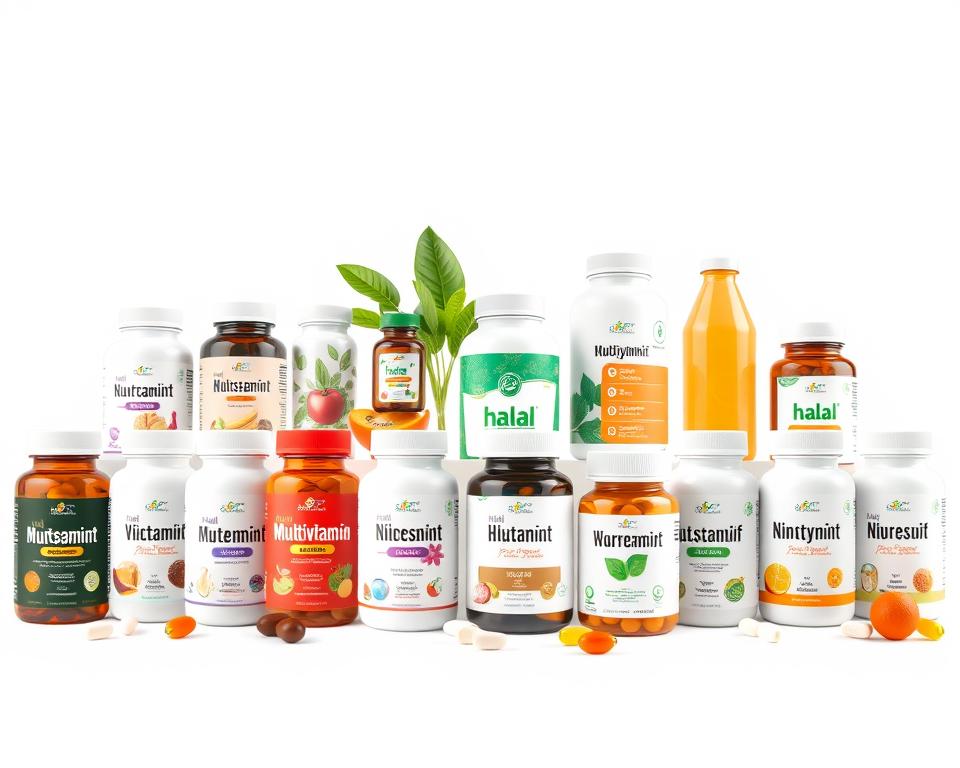Real Designer Furniture Hong Kong for Lavish Dwellings
What is required to convert a house into a high-end retreat? All comes down to the details—handpicked furnishings combining modern design and enduring craftsmanship. Here at Stockroom, we make that vision a reality, presenting select lines that reshape sophistication.
Featuring spaces in Wan Chai and Mong Kok, Stockroom stands as the leading luxury hub. View over 358 thoughtfully selected products, sold in-store or online. Our VIP services include custom marble tables and upholstered sofa beds, tailored to your unique style.
If you’re in Wan Chai, receive same-day delivery across a 3km radius. Enhance your living space with Dining Chair Hong Kong, as each item narrates a tale of refinement and excellence.
Principal Conclusions
- Stockroom is a top destination for luxury, with showrooms in Wan Chai and Mong Kok.
- Our select ranges fuse contemporary style and classic artistry.
- Discover 358 thoughtfully selected products in our showroom or online.
- VIP options give you custom-finished marble tables and tailored upholstered sofa beds.
- Same-day drop-off applies to Wan Chai residents within 3km.
Designer Furniture Basics in Hong Kong
Hong Kong remains a lively hotspot for groundbreaking decor ideas. The locale fuses old-world charm and new-age aesthetics, forming a special arena for sophistication and imagination. Over the last 15 years, Stockroom has been integral to this growth, sourcing high-end European items that reinvent sophistication.
Our Wan Chai and Mong Kok locations feature various design genres. Ranging from Modern Vintage to Industrial Loft and Scandinavian Minimalism, we appeal to all sensibilities. All collections are constructed carefully for aesthetic appeal and lasting strength.

We’re proud to introduce cutting-edge materials like scratch-resistant ceramic tabletops. These advancements blend useability and fashion, fitting for today’s dwellings. Whether you’re redecorating or starting fresh, our collections offer endless possibilities.
Those in need of a tailored touch can rely on our VIP design advisors. Our design team cooperates with you to fashion spaces showcasing your singular vision. Drop by Stockroom and witness the mastery of upscale home styling.
Leading Luxury Dining Table Options
Boost mealtime ambience with luxury tables integrating form and function. At Stockroom, we stock one-of-a-kind tables to ensure each feast is extraordinary. Our line showcases the popular ten-person solid oak table with butterfly leaves for extra flexibility. With a price bracket of $51,380–$72,780, it’s a lasting value for your abode.
When you want a sleek look, our expanding marble table rises above. Beginning at $42,380 and backed by an 18-month guarantee, it guarantees worry-free ownership. Whether entertaining guests or dining with family, these tables command attention.
Opting for circular or rectangular tables hinges on area and aesthetic preferences. Round tables imply warmth and work best in tight spaces. By contrast, rectangular tables furnish additional seating and an enduring aesthetic. Each form is offered to match different inclinations.
Preserving your premium table is basic but necessary. Wipe with a gentle cloth on wooden areas, steering clear of strong cleansers. Regarding marble tables, routine sealing upholds their unspoiled appearance. Following these pointers keeps your table a focal point over time.
Investing in a high-quality table is easier with our financing options. For purchases over $30,000 HKD, we offer flexible payment plans to suit your budget. Visit Stockroom today and find the perfect dining table to improve your home.
Sleek Sofas for Your Lounge Area
Find the ideal balance of coziness and design in our handpicked sofa lineup. If you want a showstopper or a practical feature, our sofas intend to advance your living room.
Our Italian leather three-seater couch is highly popular. It features built-in USB charging ports, making it ideal for modern lifestyles. The sleek design and premium materials ensure it stands out in any room.
Pet-friendly households enjoy our stain-defying covers that endure use and wipe off quickly. With continual use, these fabrics hold their pristine aesthetic, fitting for dynamic households.
The Stockroom furniture selection includes multi-functional sofa beds designed to save space. Incorporating memory foam cushioning, these sleeper sofas give remarkable comfort to guests. Perfect for smaller homes, these pieces combine functionality with style.
Regarding cushion inserts, choose either duck down or high-resilience foam. Duck down delivers a soft, lavish sensation, while resilient foam supplies solid support. Each type is engineered to preserve its contour over extended periods.
| Cushion Filling |
Features |
Best For |
| Duck Down |
Cushiony, indulgent sensation |
Comfort seekers |
| High-Res Foam |
Firm support, durable |
Practical users |
Take advantage of our current floor model discounts, with savings of up to 40% off. These original pieces are available for a limited time, so don’t miss out on the opportunity to improve your lounge area.
Stylish Side Tables and Cabinets
Reimagine your surroundings with handy and stylish accents that fit effortlessly into your home. Be it ceramic-topped side tables or industrial-chic metal armoires, our inventory provides multipurpose elegance for all areas.
Nesting tables with marble accents make a compelling pick. They include concealed compartments, ideal for compact areas. Their streamlined look brings elegance while stowing your items neatly.
Our secure display cabinets are essential for any collection. They combine security and refinement for exhibiting valued artifacts. Shatter-resistant glass doors reveal your collection while safeguarding it.
Wine lovers will find our humidity-managed buffets indispensable. Built to keep bottles in optimal conditions, these consoles merge usefulness with contemporary style. They are a great enhancement for both dining and living environments.
Floating console tables fit snug homes as they save precious space. They provide functionality and maintain elegant design. Their streamlined silhouette fits diverse interior styles, offering flexibility.
Complete your look with our matching living room sets. Available at a 15% bundle discount, these sets include coordinating side tables and cabinets. Using a synchronized styling method makes your room appear seamless and refined.
Whether you’re looking for a statement piece or a practical addition, our collection has something for everyone. Check out our trendy side tables and cabinets now to uplift your home’s look.
Luxury Lighting to Illuminate Your Home
Lighting plays a crucial role in setting the mood and enhancing the ambiance of your home. Stockroom provides top-quality fixtures blending fashion and practicality to refresh any area.
Our customizable pendant fixtures, priced from $6,080 to $8,180, offer a focal highlight for your dining or lounge space. These multi-purpose pendants permit altering height and direction, providing the proper look for your room.
For a modern touch, explore our Smart LED systems starting at $21,180. These mobile-controlled setups include circadian rhythm modes, altering brightness to imitate daytime light. Beyond comfort, it aids your everyday schedule.
Seeking a focal fixture? Our Murano glass chandeliers equipped with dimmers deliver elegance to any interior. Carefully fashioned, these chandeliers merge practicality and striking beauty.
Low-energy LED products are featured in our selection. They can cut energy costs by as much as 40%, offering a green and budget-savvy solution. Match them with our exterior-grade patio fixtures to seamlessly blend interior and exterior areas.
Every transaction includes skilled installation guidance to ensure perfect placement. Whether updating or embarking on a fresh start, Stockroom delivers optimum lighting fixtures to light up your area.
Chic Chairs for Every Room
Chairs serve not only for sitting—they reflect both fashion and ease. Whether equipping a homely sitting area or a modern office, the appropriate chair evolves your space.
Our ergonomic workspace chairs echoing Herman Miller emphasize function and comfort. Costing $10,480–$13,880, they offer customizable lumbar support and ventilated mesh backing. Perfect for long workdays, these chairs combine functionality with modern design.
To introduce opulence, check out our bouclé leisure chairs paired with ottomans. They suit the creation of a tranquil corner in your abode. The soft texture and neutral tones make them versatile for any decor.
Material choice is key for dining chairs. Wood contributes an age-old charm, while metal infuses a modern flair. Acrylic chairs, on the other hand, add a sleek, minimalist vibe. Each material has its unique charm, so choose based on your style and needs.
Outdoor spaces deserve attention too. Our stackable chairs come with UV protection, ensuring they stay vibrant even in harsh weather. Easy to move yet sturdy, they suit balconies or deck spaces perfectly.
Don’t miss our current promotion: Buy One, Get One 50% off on select styles. This limited-time offer is your chance to improve your home without breaking the bank.
- Office chairs designed for ergonomic comfort and output.
- Bouclé lounge seats plus ottomans for a snug haven.
- Dining chairs in wood, metal, or acrylic to suit your style.
- Stackable outdoor chairs with UV protection for durability.
- BOGO 50% off promotion on select styles.
Dining Room Must-Haves
Creating a dining space that feels both inviting and luxurious starts with the right essentials. From the perfect table to stylish chairs, every detail contributes to a cohesive and elegant look.
Ideal tabletop heights fall from 28″ to 30″ to fit different seating styles. Below is a brief chart to guide your selection:
| Chair Type |
Ideal Table Height |
| Classic Dining Chairs |
Between 28 and 30 inches |
| Taller Bar Stools |
From 36 to 42 inches |
| Prep Counter Stools |
24″-26″ |
Coordinate your table with stain-resistant cloths from Stockroom’s home accents line. These cloths combine function and fashion, simplifying cleaning as they infuse elegance into your table setting.
For hosting aficionados, china cabinets with glassware storage features are vital. They arrange your fine dishes and glasses systematically and within easy reach, so every dinner feels unique.
Round out your table with our ten-piece place settings sold in several designs. These sets include everything you need to create a polished and cohesive table setting, perfect for both everyday meals and special occasions.
Require design support? Our space planning specialists are on hand. Whether you’re in a spacious open area or a snug dining space, our experts will plan a layout that elevates both form and function.
From solid oak tables to matching seating, Stockroom delivers all essentials to enhance your dining area. Visit us today and discover the perfect pieces to transform your space.
Top Luxury Materials
The basis of high-end design is in the materials that form it. Including FSC-verified oak to 304 stainless steel to Grade A marble, every material bestows individual character and long-lasting quality. Let us examine these choices that embody sophistication and practicality.
Regarding wood, oak, walnut, and teak rank highest for durability and aesthetics. Consider this concise chart:
| Wood Type |
Durability |
Best Use |
| Oak |
Excellent |
Cabinetry, furniture |
| Solid Walnut |
Mid-Range |
Small furnishings |
| Premium Teak |
Very High |
Deck furniture |
For high-touch surfaces, antimicrobial copper alloy finishes are a game-changer. Their glossy appearance plus sanitary qualities make them excellent for culinary and bathroom spaces.
High-heat ceramic surfaces are another cutting-edge option to evaluate. Ideal in cooking areas, they resist extreme heat yet stay looking flawless. Thus they’re both useful and chic.
Confused about the best material? Try our sample delivery program. We offer free home delivery of samples, allowing you to see and feel the quality before making a decision.
Subscribers of sustainability adore eco-wise selections like bamboo composite. These materials are not only durable but also environmentally conscious, aligning with modern values.
Covering established wood to modern metal and ceramic coatings, optimal materials craft an opulent oasis. Peruse our lineup now and pinpoint the best material for your room.
Small Space Designer Furniture
Maximizing space in smaller homes requires smart, stylish solutions. Stockroom zeroes in on items fusing versatility and flair, maximizing every bit of space.
Murphy beds, priced from $34,280, revolutionize studio living. They close up neatly, creating extra floor surface throughout the day. Match them with fold-out coffee tables ($7,080–$7,680) to create an adaptable arrangement.
Multi-functional ottomans with hidden storage are perfect for keeping clutter at bay. They function as extra chairs, footstools, or mini tables, and keep your items neatly hidden.
When you work at home, desks with adjustable stature are crucial. They nestle nicely in limited spaces, affording ergonomic comfort and aesthetic appeal. Low-depth couches under 32″ wide stand out in limited spaces, offering relaxation without taking up too much area.
Mirrored furniture is a clever way to enhance natural light and create the illusion of more space. From display cases to entryway consoles, these items impart elegance and spatial illusion.
Require layout support? Our $1,800 space planning service grants expert help to configure your area. Be it arranging a studio or a petite apartment, Stockroom has the best solutions to update your home.
Classic Furniture That Endures
Designing a classic residence depends on uniting tradition with modern refinement. At Stockroom, we offer curated pieces that stand the test of time, ensuring your space remains stylish for years to come.
Our Chesterfield sofas, priced at $47,780, are a perfect example of timeless design. With their tufted leather and rolled arms, they add a touch of sophistication to any living room. Match them with Persian-influenced rugs priced at $64,880 for a unified arrangement radiating high-end flair.
For history buffs, our mocked-up antique writing desks are essential viewing. Each piece features hand-carved wood detailing, showcasing the craftsmanship of a bygone era. Not only do these desks serve a purpose, but they also stand as artistic creations.
Heritage fabric patterns from European mills add another layer of elegance to our collection. Take a glance at a comparison of our favored textile designs:
| Pattern |
Origin |
Best Use |
| Classic Damask |
France |
Window treatments, upholstery |
| Toile de Jouy |
English Mills |
Feature chairs, throw pillows |
| Italian Brocade |
Italy |
Accent furniture |
Our restoration experts revive heirloom items so they keep looking stunning for years. Whether it’s a family treasure or a vintage find, our experts can bring it back to life.
Our restricted-edition, numbered series are a collector’s delight.
Every element is distinct, acting as a valuable decor piece.
Browse our ageless items now to shape a home that reflects you.
Inexpensive Luxury: Sale Picks
Obtaining luxe Solid Oak Wood Furniture Hong Kong inexpensively is less complicated than you expect. Our curated sale items feature elite quality without the lofty price. If you want a modern sofa bed or a complete dining lineup, we have you sorted.
Look at our present specials: sofa beds priced from HK$8,980 and dining sets from HK$7,980. These furnishings blend refinement and purpose, right for every abode.
Catch our 72-hour flash sale pieces, refreshed every week. These fleeting deals offer our hot-ticket items at record-low price points. Don’t delay—these savings vanish soon!
To slash prices further, check our floor samples discounted by up to 60% off the original price. These pieces are in excellent condition and ready to improve your space.
Visit our clearance zone for past-season highlights. They accommodate buyers wanting current styles at low cost. Moreover, extended warranty protection covers all sale items for extra security.
VIP members enjoy early access to all sale events, ensuring you get first pick of the best deals. Sign up for VIP status now and begin enjoying luxury savings.
Custom Furniture Services
Creating a personalized environment is a breeze with our tailored offerings. Whether you want a one-off centerpiece or a utility piece, our services make sure each item reflects your vision accurately.
Begin with our tailor-made marble tables, built to your exact requirements. Having an 8-week to 12-week production schedule, these tables repay the delay.
Decide on any size and finish combination to harmonize with your space’s aesthetic.
Reupholstering options allow you to revamp treasured pieces. Offering 200+ cloth swatches, you can convert an old sofa or chair into a modern item. Select from vibrant motifs to classic tones, depending on your taste.
Modular shelving systems offer flexibility with 15+ configurations. If you want shelves for literature, decorative items, or both, these systems shift to your requirements. Perfect for small spaces or large rooms, they’re both practical and stylish.
Personalize further with monogram embroidery on leather products. From seats to footrests, these personalized touches guarantee one-off pieces.
The 3D visualization feature lets you preview the end result before you decide. Experiment with different layouts, colors, and materials to create a space you’ll love.
For intimate corners, look into custom window seat creations. They’re made to your room’s dimensions, providing comfort plus hidden storage. They suit reading corners or casual breakfast spaces.
- Bespoke marble tables requiring 8–12 weeks to produce.
- 200+ cloth swatches for personalized reupholstery.
- Modular shelving systems featuring over 15 setup choices.
- Monogramming services for leather goods.
- Three-D design preview tool.
- Custom-fit window bench solutions.
From design concept to material selection, our tailored choices meet your specific requirements. Check out these services today to build a domicile that’s authentically yours.
Places to Buy Designer Furniture in Hong Kong
Uncovering where to shop for luxurious home decor proves to be very simple. If you’re checking out our Wan Chai flagship or dropping into Mong Kok, every gallery supplies an individualized shopping experience. Every showroom offers a one-of-a-kind visit customized for you.
Come to our Wan Chai showroom on 8/F Shun Pont Commercial Bldg, where refinement and novelty converge. At our location, view curated ranges uniting trendy design and traditional craftsmanship. In Mong Kok, our showroom boasts a warm environment, optimal for uncovering special finds.
Parking is a breeze with our validation program. Just hand your ticket at reception, and we’ll handle everything else. This extra perk guarantees a smooth shopping trip from beginning to end.
To get a personalized service, reserve a private shopping consultation. Our consultants will escort you through our selections, assisting you in picking pieces that reflect your style and vision. It’s a private shopping experience curated specifically for you.
Company accounts receive extra advantages like corporate pricing and early previews of new items. Whether designing an office or staging a client’s space, our team stands by to aid.
We handle global logistics through DHL, enabling elite furnishings to reach you wherever you are. Through trusted delivery and tracking, your orders come securely and promptly.
From exploring our gallery to reserving an exclusive session, every component is created to improve your shopping adventure. Come by now to learn why we’re the preferred destination for upscale home decor.
Tips for Styling Your Home with Designer Pieces
Your home is a reflection of your personality, and styling it with the right pieces can make all the difference. Stockroom asserts that crafting spaces with both use and visual wow is essential. Our styled rooms are social-media-ready, supplying boundless motivation for pairing old and new design elements.
Commence by combining ageless vintage decor with current accents. For instance, balance a time-honored Chesterfield sofa with polished, up-to-date console tables. This fusion develops a layered effect that’s both snug and fashionable. Seasonal collection bundles also serve as a superb way to revamp your space. Be it warm winter blankets or bright summer pillows, these bundles simplify updating your style all year.
Good lighting is pivotal for mood creation. Integrate ambient, focused, and accent lighting to achieve dimension and warmth. Hanging lamps over dining tables, floor lights at reading nooks, and LED under-cabinet strips can reshape any area. In vogue for 2024 are subtle neutrals such as beige and taupe, combined with striking accents like emerald green or dark navy.
If you don’t know where to begin, our styling professionals can assist. At HK$5,000, our specialists collaborate with you to craft a unified, custom aesthetic. If you’re sprucing up one room or the whole home, we direct you along the path.
Styling your place doesn’t have to be overwhelming. Using appropriate pointers and supplies, you can fashion a space that’s distinctly you. Drop by Stockroom now to learn how simple it is to advance your style.
Quality Investment: The Benefits
Putting money into quality pays dividends over the years. Even if quick furniture seems low-cost initially, it often forces multiple refurbishments and spikes costs in the end. By contrast, luxury furnishings are crafted for longevity, providing lasting sturdiness and sophistication.
One way to understand the value of quality is to compare cost-per-use. A solid-wood structure with ten-year coverage can be pricier up front, but lasting wear translates to future savings. Budget furniture, despite low initial cost, tends to demand replacement after some years, making it a less wise investment.
Fine furniture tends to gain heirloom status. Expertly fashioned, they’re built to remain as heirlooms for descendants. They hold narratives and sentiments, thus transcending function as valued keepsakes.
Stockroom fiercely upholds its dedication to excellence. Our restoration network keeps your items in prime shape for the long haul. Additionally, our authentication services guarantee that every item you purchase is genuine and crafted to the highest standards.
If you’re ready to refresh, our trade-in scheme provides an eco-friendly route to update your home. Present your former collections, and we’ll aid you in discovering new pieces that reflect your evolving preferences. This effortless procedure merges ease with opulence.
Spending on premium items is more than buying furniture—you’re establishing a long-lasting heritage. Check out our lineup today to understand how quality and detail transform your home.
Conclusion: Improve Your Home with Designer Furniture Hong Kong
Your home warrants the utmost quality, and Stockroom furnishes precisely that. Offering custom design packages and VIP sessions, we pledge each piece embodies your personal taste. Come to our galleries to feel opulence in person or peruse our e-catalog from your living room.
Use our temporary finance deals to simplify your path to premium purchases. To get bespoke service, schedule a one-on-one shopping session with our specialists. They can instruct you through our curated assortments to identify the right match for your place.
Become a loyalty member to gain privileges such as priority sale invites and unique discounts. Act now and explore our latest deals—browse our site today to begin converting your space into a sanctuary of style.










